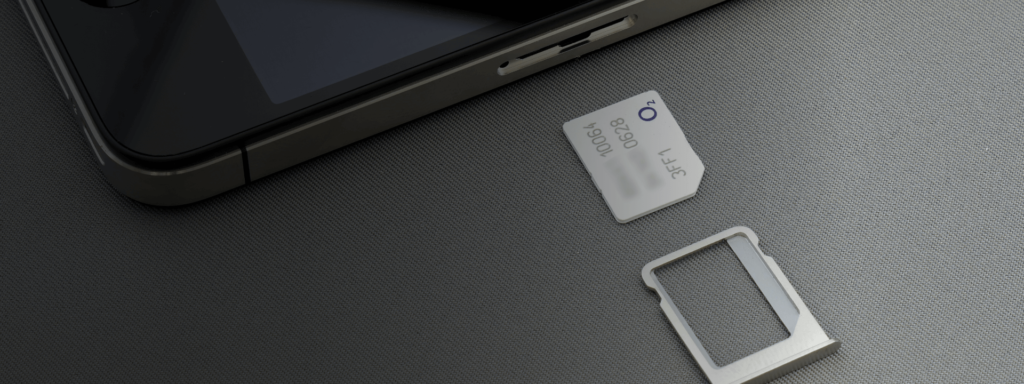An International Mobile Subscriber Identity (IMSI) is a 15-digit number for every user in a Global System for Mobile communication (GSM). The IMSI is used by Mobile Network Operators (MNOs) and is an important part of the Subscriber Identity Module (SIM) profile.
The 15 digits of the IMSI number consist of three parts that help identify the user:
- Mobile Country Code (MCC). The first 2 or 3 digits of the IMSI identifies which country the user operates in.
- Mobile Network code (MNC). The next 1 to 3 digits identifies which MNO the user is associated with, essentially someone’s SIM provider.
- Mobile Subscription Identification Number. The last 9 or 10 digits of the IMSI is a unique combination of digits to identify the SIM card user.

If your IMSI number was 310260000111222, you would be able to tell that you operate in the United States and use T-Mobile. Here’s how that IMSI breaks down:
- 310 is the MCC for the United States of America.
- 260 is one of the MNCs for T-Mobile.
- 000111222 is the Mobile Subscription Identification Number and would be unique to you.
Components of IMSI:
The International Mobile Subscriber Identity (IMSI) is a unique identifier crucial for mobile networks to authenticate and manage subscribers. IMSI is composed of three distinct components that together form a comprehensive breakdown of the user’s identity. The first component is the Mobile Country Code (MCC), a three-digit code that identifies the country in which the mobile device is registered. The second component is the Mobile Network Code (MNC), typically comprising two or three digits, pinpointing the specific mobile network within the identified country. Lastly, the Mobile Subscriber Identification Number (MSIN) constitutes the remaining digits, uniquely designating an individual subscriber within the identified network. Collectively, these components within an IMSI provide a granular and structured insight into a mobile user’s identity, allowing for efficient network management and secure communication.
What Is the Difference between IMSI, ICCID and IMEI Numbers?
An IMSI identifies the user in the GSM and is a portion of the SIM profile, but it doesn’t identify the SIM card itself. The Integrated Circuit Card ID (ICCID number) identifies the actual SIM card itself and not necessarily the user. For example, you could have three SIM cards for three separate devices you use, and each SIM card would have a unique ICCID. You would still only have one IMSI to identify you as the device user. Your MSO would use your IMSI within your SIM cards to authenticate your device when it attempts to connect to a network.
On the other hand, each mobile phone has a separate identification number that’s unique to each device called the International Mobile Equipment Identity (IMEI) number. So if you had two mobile phones, each phone would have a IMEI number, each of your two SIM cards would have a unique ICCID, and you would still only have one IMSI number. This could be different depending on your network provider.
The Challenges with IMSI Numbers for IoT
In most situations, having only one IMSI number isn’t a problem for most people. But a singular identification number can sometimes cause problems with the Internet of Things (IoT) for device managers. If you have many connected devices, you might experience these two main challenges with your IMSI numbers:
Lack of IMSI Coverage in All Locations
With some devices, you might be spread across multiple states or even multiple countries. Within each country, your devices will only be able to connect with that MSO. If that MSO has poor coverage in an area, your devices there can lose connectivity. There is the option to try and connect through your MSO’s confirmed roaming partners in these areas, but these networks might not be the best connections in that area. They’re simply what your MSO has a deal with, not what’s best for you. So your international (or even just a large national) IoT network can suffer from connectivity issues with a traditional IMSI.
IMSI Network Challenges
Your IMSI forces you to rely on a single network carrier. While that can keep things simple, the MSO’s weaknesses become your weaknesses. Dead zones, outdated technology, and changing prices affect you every step of the way—and you’ll have little control over it. You might have to pay more for your coverage if your MSO raises the cost. You can’t operate in its dead zone. An IMSI can tether you to these network challenges.
The SIMON IoT IMSI Solution
SIMON IoT provides SIM cards with global coverage, consistent pricing, and flexibility. Instead of locking yourself in with a traditional MSO, we can choose a service provider that will work with you and provide you with the coverage, pricing, and flexibility you need. With the multiple offerings available through SIMON IoT, you won’t suffer from the lack of coverage and network challenges of traditional MSOs. Instead, you’ll be in control of your IMSI network and coverage.